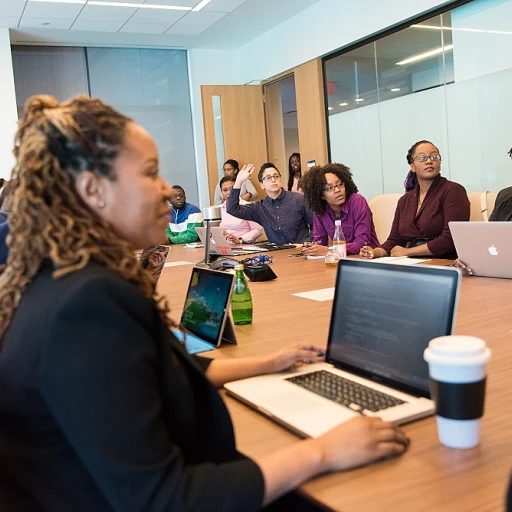
Understanding High Potential Employees
Identifying and Nurturing Top Talent
High potential employees are often seen as the future leaders and innovators within an organization. These individuals not only have significant skills and capabilities but also exhibit a strong drive to succeed and achieve goals. They are poised to take on greater responsibilities and contribute to the overall success of their companies. A fundamental aspect of understanding high potential employees is recognizing the unique blend of skills and characteristics they possess. These individuals tend to have a keen ability to learn quickly, demonstrate leadership capabilities, and bring innovative ideas to the table. They often stand out in the crowd due to their ability to build effective working relationships and navigate complex social dynamics within the workplace. Their career path is often marked by rapid progression, moving through roles and responsibilities at a faster pace than their peers. This trajectory requires support and guidance to ensure they continue to grow and remain engaged with their work. Mentoring plays a crucial role in this process, providing the guidance and support needed to harness and nurture the potential these individuals carry. By providing an effective mentorship program, organizations can ensure these high potential employees receive the guidance they need. The relationship between mentors and mentees can be incredibly beneficial, as it encourages the transfer of knowledge and skills, building on existing strengths and minimizing weaknesses. The key to successful mentoring relationships lies in matching the right mentor mentee pair, setting clearly defined goals, and maintaining open lines of communication throughout the mentoring process. This will help in fostering a supportive environment that not only aids individual growth but also aligns personal and professional goals with the organization's objectives. For a deeper dive into understanding high potential employees and how to unlock their potential, consider reviewing this guide to high potential employees. This resource offers insights into their development and the best practices to follow in mentoring them effectively.The Importance of Mentoring
The Role of Mentoring in Career Advancement
Mentoring plays an essential role in the development and career advancement of high potential employees. These dynamic individuals often possess remarkable skills and drive, yet they also benefit significantly from the wisdom and experience that a mentor can provide. Through effective mentorship programs, mentors can influence and shape the future of these emerging leaders by helping them to enhance their strengths and overcome challenges.
The mentor-mentee relationship is a symbiotic one, where both parties can grow and learn. Mentors provide support and guidance, while mentees bring fresh perspectives and enthusiasm that can rejuvenate and inspire their mentors. A good mentor acts as a role model, offering insights and advice that can help mentees achieve their career goals.
Effective Mentorship Practices
In an effective mentorship relationship, setting clear goals and expectations is paramount. This ensures that both mentors and mentees have a mutual understanding of the objectives to be achieved. Regular meetings and open communication form the backbone of successful mentoring relationships, allowing for ongoing feedback and adaptation of strategies to meet evolving needs.
Mentoring doesn’t just focus on personal professional development; it also offers various social learning opportunities through group mentoring or peer mentoring initiatives. Such approaches enable high potential employees to interact and learn from a diverse array of experiences and viewpoints.
Mentorship programs can also embrace modern forms of mentoring, like virtual mentoring and reverse mentoring, to bridge gaps in skills and knowledge. Situational mentoring, where mentors provide guidance on specific issues as they arise, is yet another effective approach that can be used.
Factors Contributing to Success
A successful mentoring program not only focuses on skills development but also on building strong interpersonal relationships. This involves understanding the individual needs of mentees and tailoring mentorship approaches accordingly. Mentor selection is critical; effective mentors are those who can balance support with challenge, encouraging their mentees to stretch their capabilities and foster resilience.
Ultimately, the effectiveness of mentoring relationships is measured by the satisfaction and growth of both mentors and mentees, alongside the tangible career advancements and achievements of the mentee. In today’s fast-paced work environment, mentoring remains a valuable tool for nurturing the leaders of tomorrow.
Challenges in Mentoring High Potentials
Potential Roadblocks in Mentorship
Mentoring high potential employees can be a rewarding experience, but it is not without its challenges. One key challenge involves aligning the goals and expectations between mentors and mentees, which is crucial for establishing a productive mentoring relationship. Misaligned objectives can result in unmet expectations and disengagement. It's essential for both parties to communicate their aspirations clearly and find common ground to focus on achievable goals.
Limited Time and Resources
Time constraints and resource limitations are common barriers in any mentoring program. High potential individuals often juggle multiple responsibilities, making it difficult for them to dedicate sufficient time to mentorship. Moreover, mentors themselves may have demanding schedules, reducing their availability for their mentees. To address this, organizations can implement group mentoring or virtual mentoring as flexible alternatives. Such approaches can help provide the support while respecting the time challenges faced by both parties.
Encouraging a Growth Mindset
Another challenge is fostering a growth mindset among mentees. High potential employees, often characterized by exceptional skills, may encounter hurdles in recognizing areas for improvement. Mentors play a crucial role in encouraging mentees to embrace continuous learning and personal professional development. Through effective mentorship, role modeling, and constructive feedback, mentors can help their mentees develop a mindset focused on achieving career growth.
Building Trustful Relationships
Establishing trust is foundational in any effective mentorship program. High potential employees must feel supported and valued, which can only be achieved by building strong, trust-centered relationships. Good mentors need to be empathetic, offering guidance while respecting the individuality of the mentee. The development of trust paves the way for open communication, facilitating the sharing of challenges and aspirations. This creates an environment conducive to growth and innovation, allowing both mentors and mentees to benefit from the mentoring experience.
Effective Mentoring Strategies
Strategies for Successful Guidance
Effectively mentoring high potential employees requires more than just pairing a mentor with a mentee. It is about crafting a supportive environment that fosters personal and professional growth through meaningful mentoring relationships. Here are some strategies to ensure quality mentorship experiences:
- Define Clear Goals: Both mentors and mentees should discuss and establish clear, achievable goals at the outset. This keeps the mentoring relationship focused and productive, providing a benchmark for progress and success.
- Customize the Approach: Be it situational mentoring or virtual mentoring, tailor the mentorship style to the individual needs of the mentees. Flexibility allows mentors to be more responsive to varied learning styles and preferences.
- Commit Time and Effort: The success of mentorship programs is highly dependent on the commitment to allocate time and resources. Educate and encourage mentors to dedicate sufficient support to foster effective mentor mentee connections.
- Foster Open Communication: Implement systems or forums that promote open dialogue between mentors mentees. This can enhance understanding, encourage feedback, and drive continuous improvement in the mentoring program atmosphere.
- Incorporate Reverse and Peer Mentoring: By engaging mentors in reverse mentoring and facilitating group mentoring sessions, organizations can give rise to mutual learning avenues, enriching mentors as well as mentees.
- Provide Continuous Support: Facilitate workshops and guidance for mentors to build their role modeling skills. Also, ensuring that ongoing support is accessible helps them manage mentoring challenges.
A robust mentorship program not only helps mentees to achieve their objectives but also strengthens the overall organizational mentoring initiative. By focusing on these strategies, businesses can cultivate a culture that prioritizes employee development through strategic mentorship.
Measuring Success in Mentoring
Evaluating the Mentoring Journey
In the world of mentoring, gauging the success of mentoring programs requires a strategic approach. Success in these mentoring relationships can be assessed through various lenses, such as the achievement of pre-set goals, skill development, and career progression of mentees.
- Achievement of Goals: One of the primary indicators of effective mentorship is whether the mentoring relationship has helped mentees achieve their personal and professional goals. This involves setting measurable objectives at the onset of the mentoring program and regularly revisiting them throughout the process. Milestones reached by the mentees serve as tangible proof of progress.
- Skills Development: Another crucial element to measure is how the mentoring has helped in building specific skills in the mentees. Whether it's communication, leadership, or technical skills, the mentors play a vital role in fostering these capabilities through guidance and practice.
- Career Progression: Career advancement is often a key goal for mentees mentors need to focus on. Tracking the career paths of individuals post-mentorship, examining promotions or new opportunities, provides insight into the effectiveness of the mentoring provided.
Overall, effective mentorship not only benefits the mentees but also enriches the mentors, creating rewarding social and professional relationships. Peer mentoring, reverse mentoring, and virtual mentoring have become increasingly common, offering diverse ways to foster impactful mentorship experiences. Incorporating feedback from both parties can help refine mentoring strategies, ensuring a supportive and growth-oriented environment for all involved.
Future Trends in Mentoring
Embracing Change: The New Landscape of High Potential Mentoring
As businesses innovate and grow, so too must their approaches to nurturing talent. High potential employees today seek mentorship experiences that not only address their career development but also align with changing workplace dynamics and cultural shifts. To stay relevant, organizations are exploring various trends that promise to reshape the future of mentoring.- Virtual and Hybrid Mentoring: The shift to remote work has made virtual mentoring a necessity, allowing mentors and mentees to connect irrespective of geography. Technologies facilitate this link, supporting interactions that mirror face-to-face mentorship but with greater flexibility and reach.
- Peer and Group Mentoring: As companies value collaborative skills, peer mentoring and group mentoring approaches gain traction. These formats cultivate a supportive community, enabling mentees and mentors to learn from varied experiences, fostering a more holistic development.
- Reverse Mentoring: In the spirit of mutual growth, reverse mentoring flips traditional roles. Experienced individuals learn from younger, digitally adept colleagues, gaining new insights and fostering mutual respect and inclusivity within the workplace.
- Situational and Informal Mentoring: Flexibility is key in modern mentorship programs. Situational mentoring and informal mentoring allow adaptation to real-time challenges, providing timely support. Tailoring these approaches to address immediate needs can enhance an individual's learning journey.












